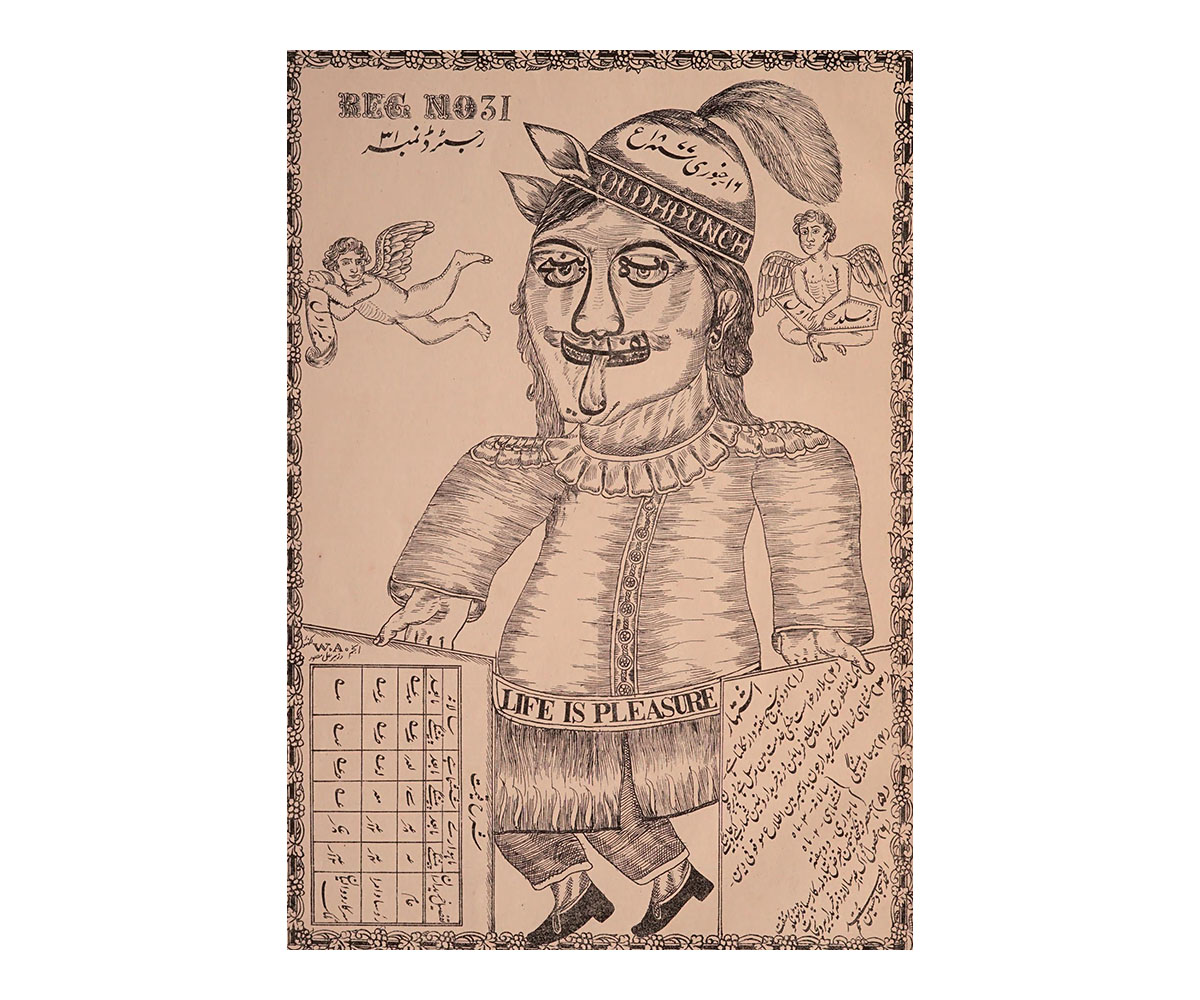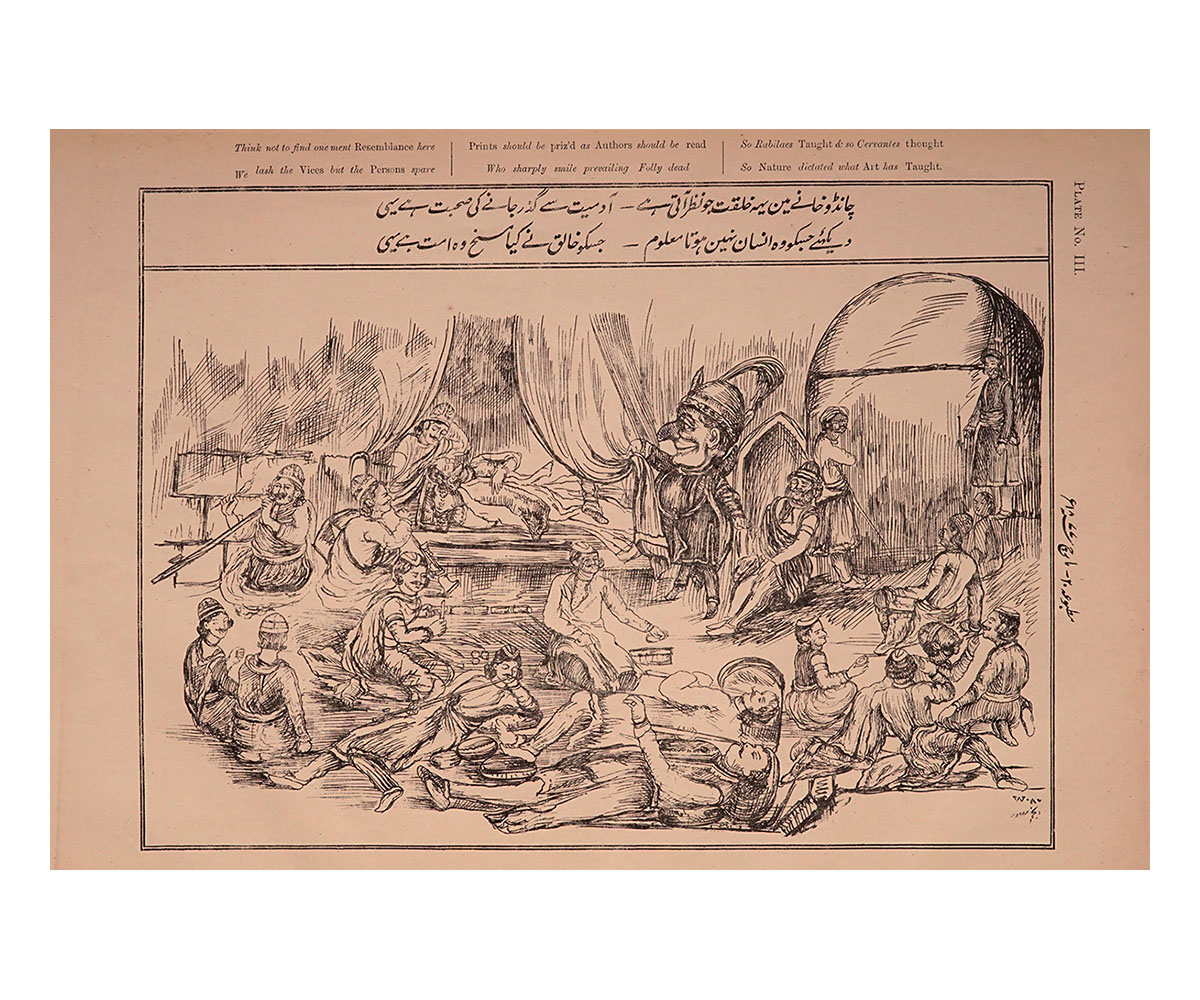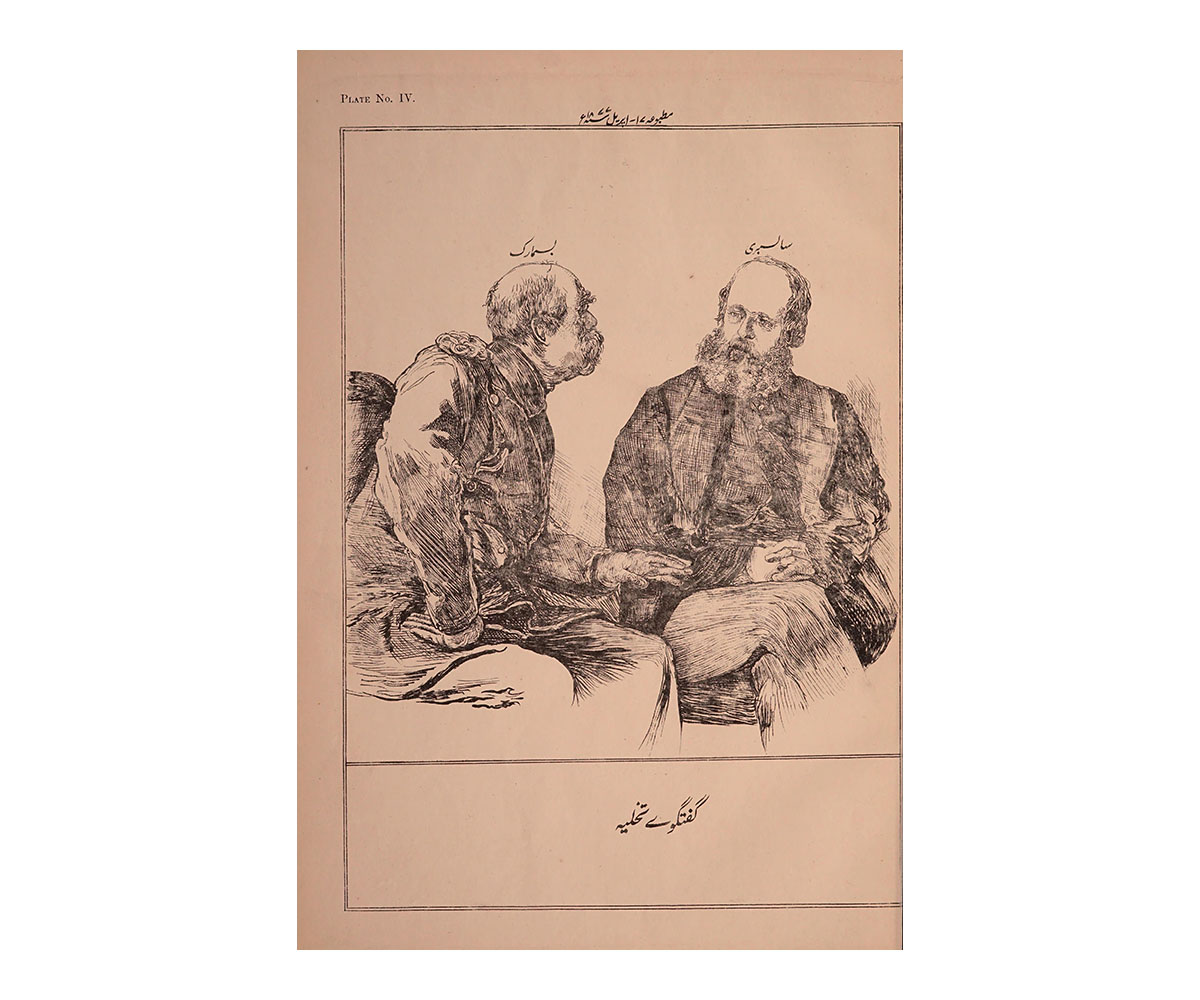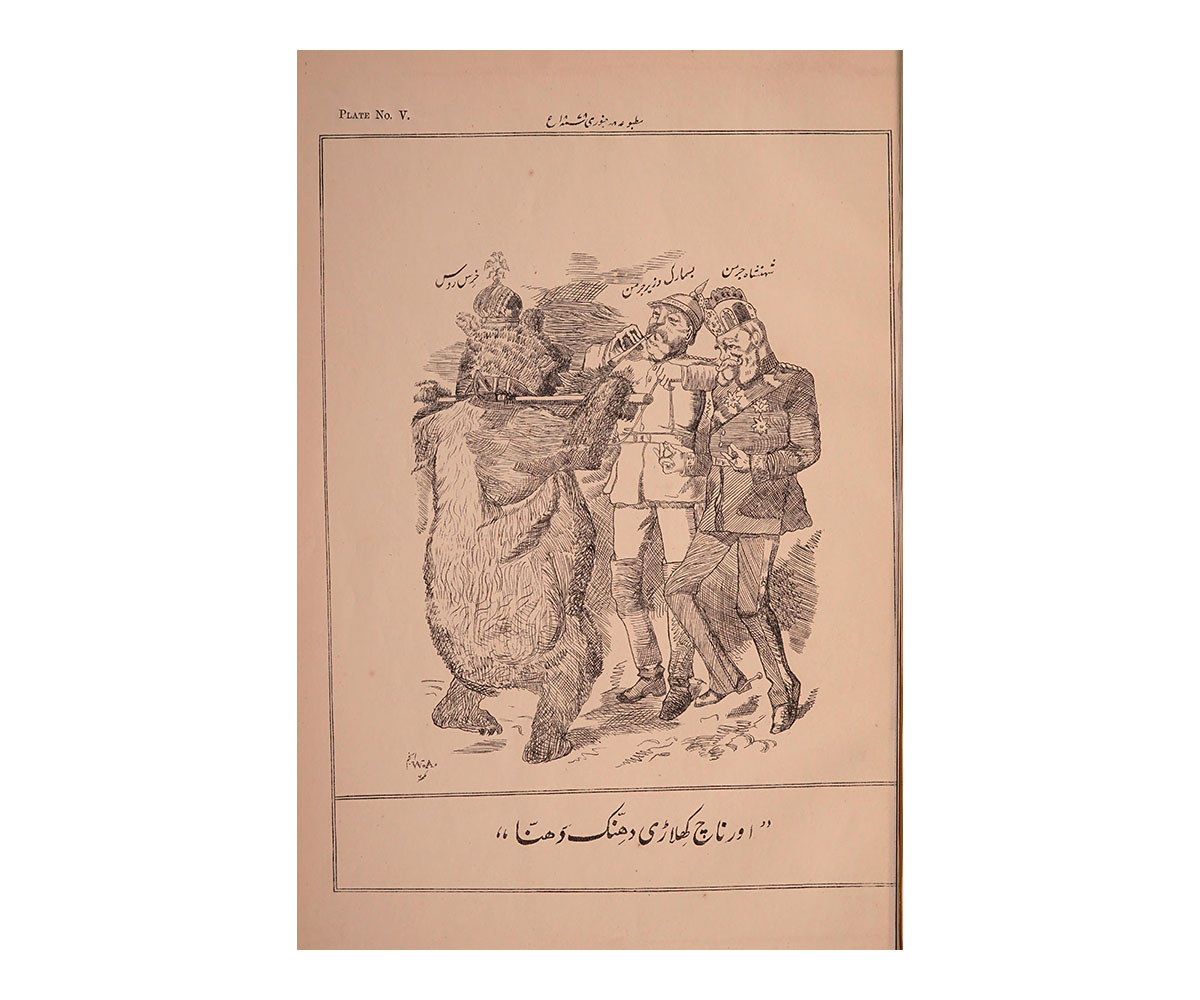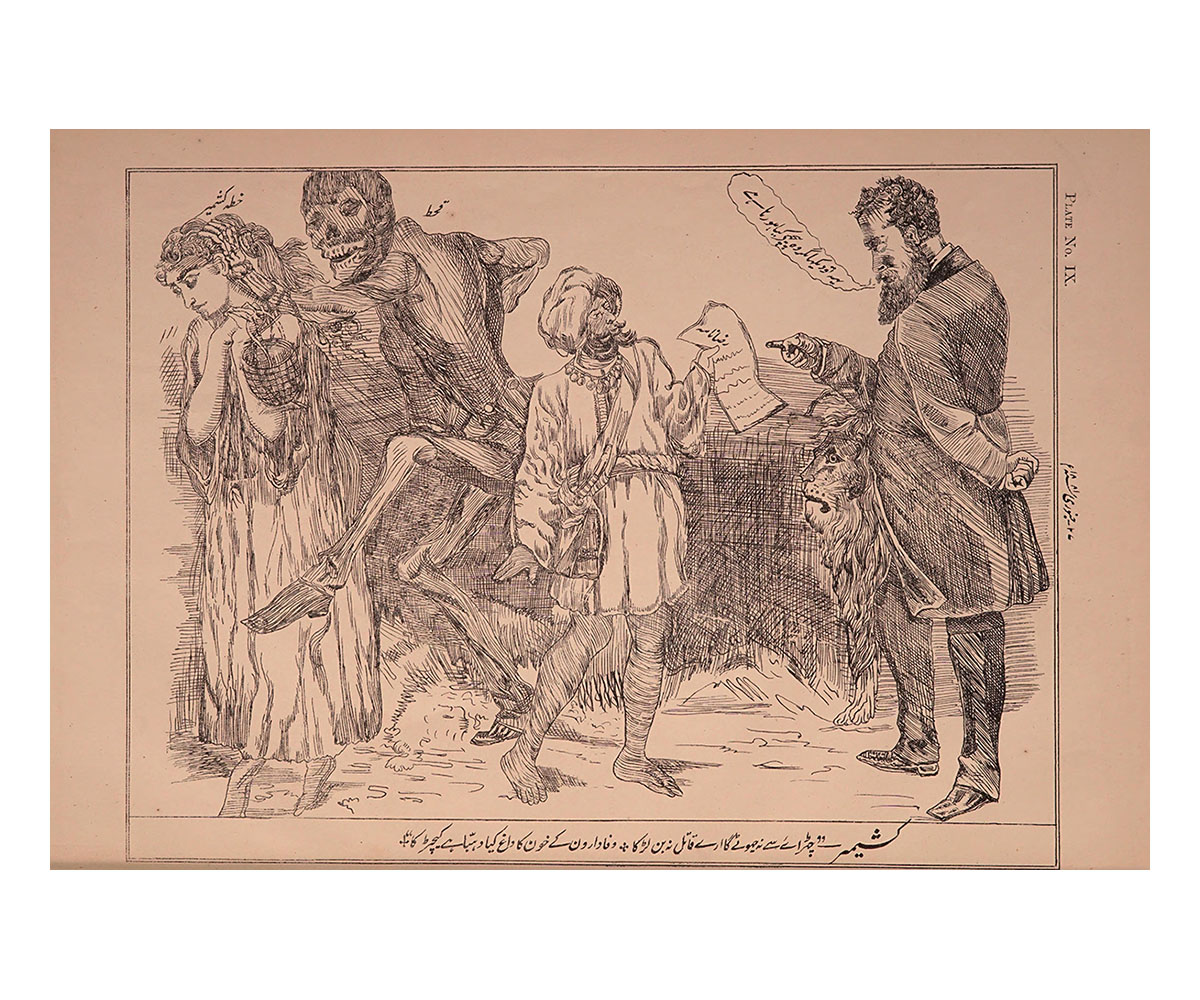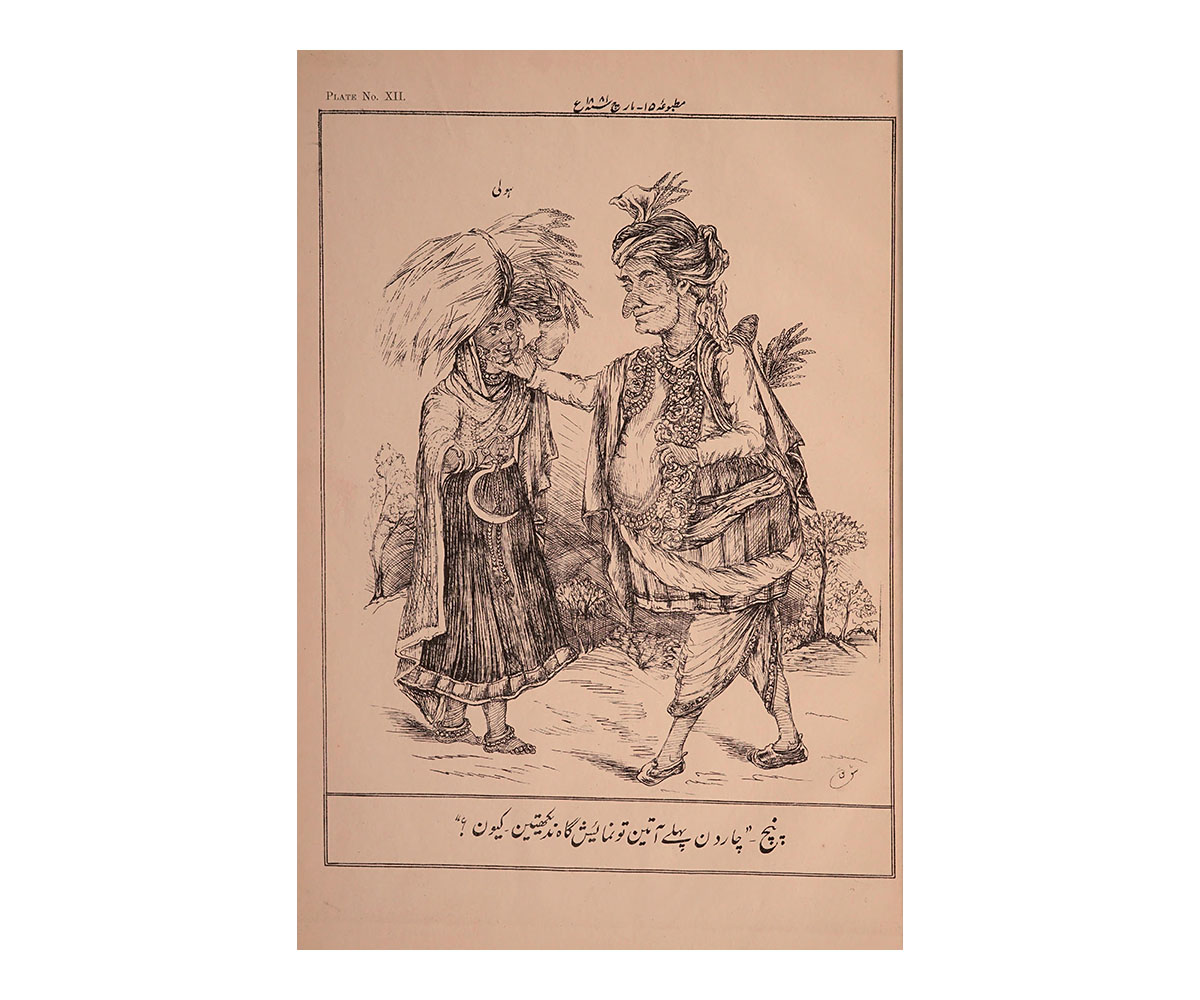PERSPECTIVES
How a Victorian Magazine Paved the Way for Satirical Writing in India
“Life is Pleasure,” reads the banner hanging over the central table on the cover illustration of Awadh (Oudh) Punch, an Urdu language periodical established in Lucknow (part of the historic region of Awadh) in 1877. At the head of the table sits Mr. Oudh Punch, the mouthpiece of the magazine. An Englishman, a nobleman, a Sikh, and a Parsi are seated next to him, while other caricatured characters surround the table on all four sides. The title of the publication is spelt out through figures bent in acrobatic, almost yogic, shapes.
How did illustrations such as this one, and the periodical it appeared in, incorporate influences from Western publications and pave the way for Indian humorous and satirical writing?
The Awadh Punch was established by writer Sajjad Hussain and ran until at least 1937. It was the first Indian periodical that drew inspiration from Punch at a time when there were significant exchanges between Britain and the colonies. Punch magazine, first published in 1841 London by Henry Mayhew, had established itself as a pioneer of satirical and humorous writing. Its publication came at a time when India was experiencing a rise in English language education, leading to a sizable readership among English-speaking Indians. Since its format and contents were appealing and flexible enough to be easily applied to Indian contexts, Punch was extensively adapted locally in several regional languages, eventually coming to be used as a means of political resistance by the people of the colonies.
The Awadh Punch followed the larger structure of Punch — featuring illustrations and caricatures, as well as satirical writing. Instead of Mr. Punch, it had Mr. Oudh Punch, who accompanied the reader as well as the characters of the Awadh Punch in navigating the political and social issues of the time. But where the former glorified the colonial exploits of the British, Mr. Oudh Punch viewed them with derision — advocating for the rights of Indians instead. He was, at the same time, critical of larger issues in society, “exposing” them for his readers — sometimes even literally, as in one illustration, where he raises the curtain on the excessive opium consumption in the country at the time.
The Awadh Punch popularised Urdu humorist writing, with regular contributions from leading writers such as Akbar Allahabadi and Syed Mohammad Azad. The periodical was also noted for its established stances on social and political issues, such as its support of the Ilbert Bill and dismissal of the Aligarh Movement. British policies were regularly satirised, and Hindu-Muslim unity and Shia-Sunni unity advocated for.
The cartoons in the Awadh Punch were often adapted from those in Punch, but also caricatured locals based on existing stereotypes. The title page of the magazine underscores an irony: the characters are depicted wearing “traditional” clothing, possibly to differentiate between the diverse populations of India while being mindful of their regional ethnicities. In doing so, the Awadh Punch inadvertently adopted the same stereotypes that circulated at the time. However, unlike illustrations in Punch such as John Tenniel’s Justice, which depicted the giant figure of Lady Justice swooping down upon cowering masses of Indian soldiers with an executioner’s sword as revenge for the Indian revolt of 1857, the Awadh Punch depicted Indians in more elevated positions, thereby exerting some agency.
In the years following the origin of Awadh Punch, over 70 similar publications such as the Parsee Punch and Hindi Punch emerged, catering to different audiences who often perceived the same social conditions differently. The Hindi Punch, for instance, was largely pro-British and often deviated from and responded to works published in the Awadh Punch. The regional Punches often held different stances, resulting in a fragmented image of India that was contrary to the nationalist narrative of a unified country driven by similar motivations and desires.
This discord and fragmentation likely led to the publications falling out of prominence. Nevertheless, these local Punches paved the way for political humour and art in the country.
Bibliography
“An Indian “Punch”.” Victorian Web. Accessed May 7, 2024. https://victorianweb.org/periodicals/punch/imitators/scully4.html
“Urdu Punch.” Houghton Library Blog. Accessed May 7, 2024. https://web.archive.org/web/20190505210723/https://blogs.harvard.edu/houghton/2014/11/25/urdu-punch/.
Cartoons from the Oudh Punch. The Library of Congress, 1881. Accessed May 7, 2024. https://archive.org/details/selectionfromill00unse/page/n3/mode/2up
Harder, Hans, and Barbara Mittler (eds). Asian Punches. London: Springer, 2013.
Oudh Punch archives. Rekhta. Accessed May 7, 2024. https://www.rekhta.org/emagazines/awadh-punch
Parekh, Rauf. “Literary Notes: Oudh Punch: The Social, Political, Linguistic and Literary Stance.” Dawn, 2019. https://www.dawn.com/news/1501823.





